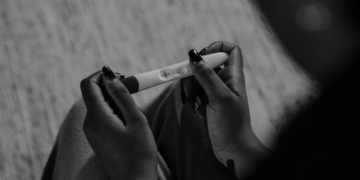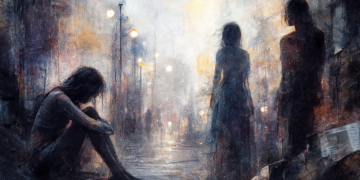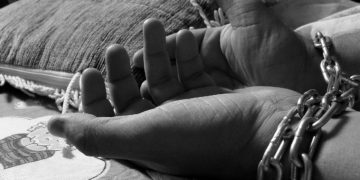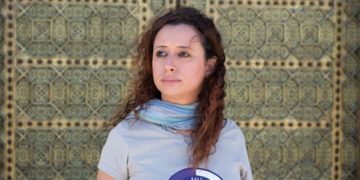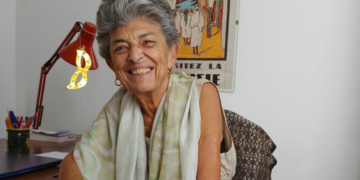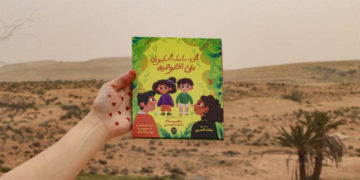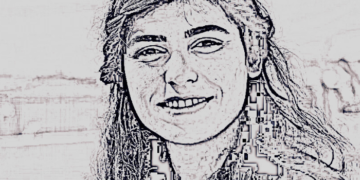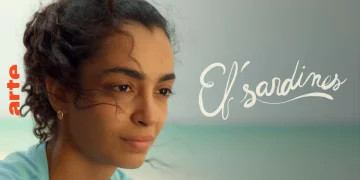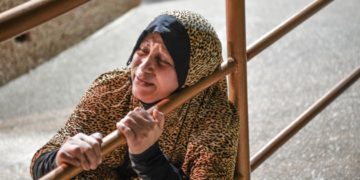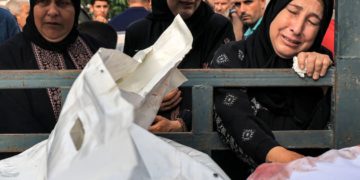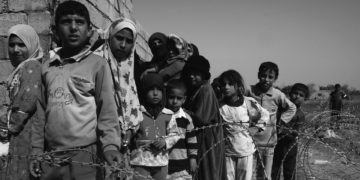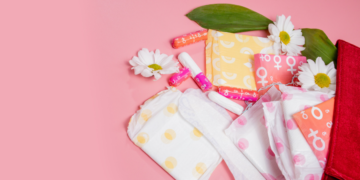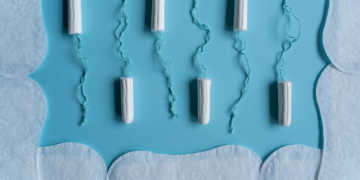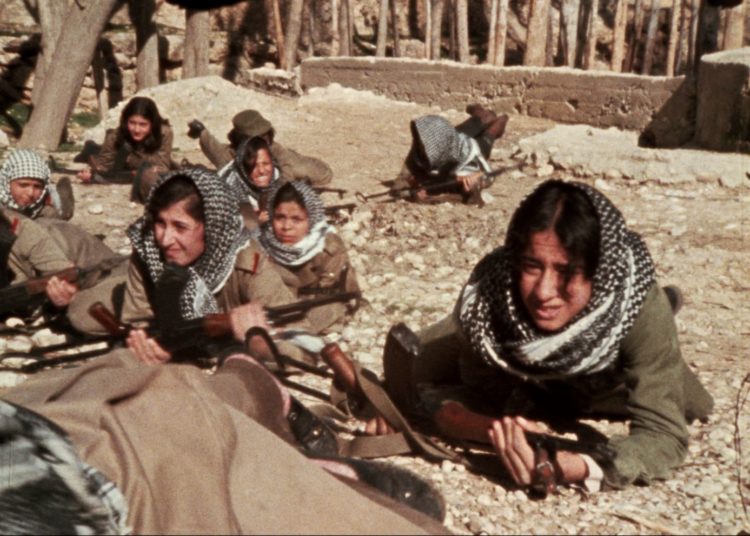This post is also available in: Français (French) العربية (Arabic)
In the heart of the Tunisian city of Monastir, at a very crowded crossroads on Kairouan Street, sits “Doctor Samira,” as she is called. From her wheelchair, she draws in passersby—male and female—tempting them with strange services that traditional doctors are unable to provide.
She is not a doctor with a white coat and stethoscope, but a doctor in the city streets, tending to people’s anxieties. She masters harkous painting, palm reading, fortune telling, and the use of playing cards and coffee beans to read fortunes and reveal mysterious secrets. Beside her is also a pile of paper tissues, which she sells as a professional beggar.
Intersections of art and astrology

Samira’s lively sessions start with the arrival of women seeking her ornamental services. Some come for harkous painting, a craft that preserves the beauty of tradition. Harkous consists of henna powder and plant materials mixed with water or other liquids, in addition to aromatic elements such as cloves, tannins, and iron, as well as oils that enhance the color and improve the quality of the drawings. It takes a long time to prepare, as it requires the use of a zaliziyya, a clay pot put over a low flame on the kanoon, a small stove.
But it is not only for harkous that women flock to Samira. Others seek her help to break a spell or reduce the effects of the tabi’a, which in popular belief is an invisible being that may negatively impact a person’s life—one of the fears deeply shared by many women in popular circles.
Be it to facilitate a marriage or solve a mysterious problem, Samira meets their requests with a calm face and experienced hands. Her work is somewhat ritualistic: she prepares her clients to receive her tips that stem from the depths of popular heritage. These ideas are widely popular, especially in circles that still believe in the power and influence of magic and occult practices.
Harkous is considered an extension and development of the ancient profession of henna, which women in Tunisia have practiced throughout history, decorating women with henna tattoos. Henna was not just a women’s decorative craft with traditional designs for social occasions like weddings; it was also an expression of culture and identity. As this profession developed, harkous came along, reinforcing the belief that these ornamentations go beyond adornment to enhance women’s luck and attractiveness. The designs that are drawn on a woman’s body carry symbolic dimensions rooted in ancient Tunisian culture. Some are inspired by the era of Carthage and the image of the goddess Tanit, a symbol of fertility and protection.
A profession deeply rooted in history
In the past, the practice of henna in Tunisia was limited to Black women, who at the time were referred to as “servants.” The “free” women of the upper classes of society did not practice henna, which rendered it a lower-class profession that embodied forms of slavery and social injustice. It entrenched class differences and reveals the discrimination against women according to race and social status.
Sociologist, feminist, and union activist Dorra Mahfoudh says, “The profession of harkous is an extension of the henna profession, which in the past included other tasks such as examining the ‘virginity’ of the future bride. This has, historically and in the popular imagination, stigmatized this profession as being associated with prostitution, especially when its practice moved from the private wedding space to the public arena of the street. Even though it has developed, and even though it contributes to the tourism sector and is demanded in hotels, it has remained a source of contempt.”
As for Samira’s description of her work, she puts it as follows. “This craft is my life. All I have is my fingers, my only tools with which I provide services to my clients. Acceptance comes from God. God has given me a kind of acceptance that has made more people flock to me, despite the fact that many others also offer these services.”
Samira mentions her long experience in this profession, with more than forty years of hard work in the street. It is her livelihood, her haven. It is the only place that accepts her, despite how cruel it is, as she puts it.
A spiritual refuge for women
Samira has faced great difficulties while practicing her work on the street. She has not had a fixed place to stay. Faten, one of her loyal clients, says, “I visit Samira every week. Sometimes for harkous, but mostly for her to read my fortune and mitigate the effects of the evil eye and envy.” Faten confirms that everything Samira says actually happens, and that she trusts her and feels comfortable dealing with her.
Describing the difficulties she’s faced, Samira explains, “I have to move from one place to another because of constant conflict with my peers who also practice harkous. A major fight I once had was with ‘madam’ Latifa. She supervises the Sidi Ali al-Mazari shrine, a religious shrine in the Monastir Governorate. She kicked me out of it. The site has spiritual and cultural value and attracts a lot of visitors, pilgrims, and tourists.”
For many, meeting with Samira is not just something that happens in passing. It embodies hope for relief and the future. It is a blend of popular wisdom, the scent of harkous, and coffee.
Samira is warm in providing her services. She receives the women who want their palms read with a mysterious smile that suggests she knows what they want, and with outstretched hands, she gently opens their palms and starts to read those fine lines that she sees as maps of the women’s lives. She sails between the details of the past and secrets of the future, talking to the women about what is written, their inevitable fates, marriages that could be imminent or are still a far way ahead. If the request is for harkous, Samira’s movements turn more theatrical and eye-catching as she starts to dexterously prepare the black paste and holds the needle with a steady hand, slowly dipping it into the paste, bending her head slightly to start etching intricate patterns on the women’s hands or feet.
“This craft is my life. All I have is my fingers, my only tools with which I provide services to my clients.”
Harassment by security forces and stigmatization: daily challenges
In the capital Tunis, female harkous professionals face many challenges. They sit on small, uncomfortable chairs without backrests for long hours along the sidewalk of Rue Charles de Gaulle. They look tired, and their clothes are shabby, stained with black spots from working with the harkous paste. They stretch out their black-stained hands and fingers, calling passersby to try out the harkous. This image reflects the fragility of their working conditions, from their uncomfortable position to the worn-out display signs.
Financial pressure exacerbates these women’s challenges. It is difficult for them to secure the money needed to buy high-quality harkous material, which forces them to use packaged, often lower-quality harkous. They say that they were surprised at how unsuitable this packaged harkous is for the skin, and it has an unexpected smell, which makes them concerned about it potentially being unsafe for use.
Also, police officers monitor and track down female harkous painters because their work is unauthorized. They are also stigmatized in society; people look at them with contempt, and they are exposed to harassment and violence from neighboring merchants or passersby. Indeed, when we asked a vendor set up close to these craftswomen, he expressed his displeasure. “It’s annoying, seeing a woman stretch out her foot in the street in front of a harkous craftswoman.”
In front of a store in the middle of the street, Hayat puts down the chair from which she will be working. She is 33 years old and has one child. She’s separated from her husband and lives in a rented apartment in the poor, working-class neighborhood of al-Malasin, with her sister and son.
Hayat works in the same spot all day long. At lunchtime, she sits in a corner between the door and the exit to eat her meal. She faces many difficulties during her workdays: obscene words are directed at her, her work material gets stolen, and there are constant arguments with her peers over seating locations. These problems intensify during tourist seasons, when their services are in higher demand.
According to the 2014 census, about 306,000 women in Tunisia work in the informal economy—about 32.5% of the country’s total workforce. And according to a study entitled “The Market on Rue d’Espagne, or the Street Economy Approach in Tunisia (a socio-anthropological approach)”* conducted by the Tunisian Forum for Economic and Social Rights in 2022, the vast majority of women working in the informal economy come from poor backgrounds and work in extremely difficult conditions, with long working hours and low wages. They lack any kind of social support and access to the formal banking system. And on top of their work in the street, they have to perform traditional roles that burden women, like unpaid domestic work.
Moving to temporary alternatives in the winter
The three women that Medfeminiswiya spoke to, Hayat, Habiba, and Malika, all live in the poor, popular neighborhoods of al-Malasin, Sidi Hassine, and Hay Helal. They face double difficulties: first, working in the informal sector, and second, entering spaces dominated by men.
“In the winter, life is harder on us than at any other time. No one wants harkous when it’s windy and raining. Harkous is a summertime craft, so I have to work cleaning houses, but the wages are barely enough for my daily bread. Sometimes, I go back home feeling desperate, but I know I have no other choice. We live on the margins, in a society that neither sees us nor feels for us.”
As for Habiba, her winter work is in beauty salons. “When it gets cold and activity in the market stops, I leave harkous for women’s hair salons. Not as a professional hairdresser though. I offer hair removal services, using sugar wax. It’s piece work; I don’t have a contract, no protection,” she says. “I only get paid for what I do in the day. Women come to the salon for beauty services—meanwhile, I work long hours with my hands soaked in hot sugar wax paste.”
These women pay a heavy price for their work. They are faced with violence, ostracism, expulsion; their equipment is broken. Hayat had to deal with this when a vendor attacked her and her equipment, breaking her chair and her harkous tools and cutting the signboard she used. He claimed to have done that because too many clients crowded in front of her and obstructed the view of his shop, in which he sells gifts and souvenirs to tourists.
Street harkous is prohibited by Tunisian law, as workers don’t have a commercial register and are not subject to the discretionary system designated for itinerant professionals. The law punishes harkous workers with a fine ranging from 60 dinars (about 20 US dollars) to one month in prison for opening a random stall and violating municipal decisions related to preventing the seizure of public roads.

All of this, in addition to the violence they experience, makes the lives of female harkous workers quite tragic. The issue is deeply classist too, as these street craftswomen represent the marginalized within the margin. But on the other hand, there is a centralized harkous industry dominated by major beauty salons whose owners are registered and do have licenses. Their prices start at 30 dinars (about 10 US dollars), with an additional fee for home services. These salons also have the advantage of social media presence, with accounts on Facebook and Instagram for promotion, guaranteeing them luxurious social status and distancing them from the negative perceptions that haunt the female craftswomen working in the street.
Women working in the informal economy face constant harassment by the police. They crack down on informal markets in a game of cat and mouse, such that women have to circumvent the authorities to continue earning a living. This exposes them to exploitation, as there are no clear laws to protect them.
Researcher in population sociology Nisrine Ben Belkacem explains that seasonal and unlicensed professions, like street harkous, put women in a more difficult position compared to men who practice similar professions.
“Women face gender-based sexual harassment and extortion,” she says, “while men can settle police prosecutions with bribes.”
Hostile official discourse

Amid the pitfalls imposed by the current political and economic crisis, the suffering of street harkous craftswomen is increasing, given that the official discourse of Tunisian President Kais Saied is against street professions. No matter his social slogans calling to fight corruption and restore the sovereignty of the people. There are clear contradictions in his policies towards vulnerable groups in society, especially with regard to the informal economy. Since taking power, Saied has promised to eliminate this phenomenon, claiming that street vendors contribute to economic and social chaos. He did not, however, provide any practical alternatives or mechanisms to integrate these groups of people into the formal economy, thus increasing their suffering.
Harkous craftswomen are witnesses to the resistance of Tunisian women who struggle silently in unsafe environments while society and the authorities ignore them, their cries buried in the streets where they work. As Samira says, “In the street, I sometimes find myself living in fear. When I close my eyes, I see myself in a world I cannot reach… one that recognizes my existence and values my dignity. But I do not know the meaning of belonging. I belong only to the street…”
* Study: The Market on Rue d’Espagne, or the Street Economy Approach in Tunisia.
This investigation was carried out with the support of the Tunis Office of the Rosa Luxemburg Foundation.
